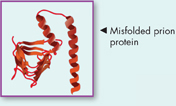Form a Hypothesis Bacteria that live on teeth produce an acid that causes decay. Why do people who do not brush their teeth regularly have more cavities than those who do?
Classify A scientist finds a new organism but is unsure to which domain it belongs. The organism is unicellular, has a cell wall containing peptidoglycan, has a circular DNA molecule, and lacks a nucleus. Based on those characteristics, to which domain does it belong?
Compare and Contrast Explain how the outcome of binary fission differs from that of both endospore formation and conjugation.
20.3 Diseases Caused by Bacteria and Viruses
Understand Key Concepts
Disease-causing organisms are known as
cocci.
bacteria.
pathogens.
archaea.
Which of the following scientists is responsible for developing the germ theory of disease?
Ivanovski
Beijerinck
Pasteur
Darwin
Viruses typically cause disease by
releasing toxins.
infecting and then destroying cells.
causing mutations in the host cell DNA.
destroying red blood cells.
Which of the following can be helpful in treating bacterial diseases but NOT viral diseases?
vaccines.
antibiotics.
antiviral drugs.
aspirin.
What is the best way for people to protect themselves against most viral diseases?
List three different ways bacterial growth can be controlled.
What is meant by the term emerging disease? Give three examples of emerging diseases in North America.
How do misfolded prions cause disease?
solve the CHAPTER MYSTERY

THE MAD COWS
The “mad cow” disease that appeared in 1986 in Britain spread quickly among cattle herds. Humans were afflicted by a similar disease, known as nvCJD (new variant Creutzfeld-Jacob Disease), and scores of people died. The disease virtually disappeared when the government banned the practice of using ground-up cattle tissue in protein feed supplements. It now seems clear that “mad cow” and nvCJD were caused by prions in the meat and brain tissue of infected cattle. When these prions entered the food supply, the infection was able to spread to other cattle, and to humans eating meat from infected animals. Officials in Europe and the United States have instituted new controls on meat production to try to prevent further outbreaks of this prion-based disease.
Infer The rapid rise of BSE between 1986 and 1991 ended when British authorities banned the use of meat and bone meal in feed supplements for cattle. How does this support the hypothesis that BSE is caused by prions?
Apply Concepts Why did most scientists conclude that BSE was not caused by either viruses or bacteria?
Connect to the
 Prions are proteins, not organisms unto themselves. However, they have some lifelike qualities. What characteristics do prions share with cell-based life? Explain.
Prions are proteins, not organisms unto themselves. However, they have some lifelike qualities. What characteristics do prions share with cell-based life? Explain.


Table of Contents
- Formulas and Equations
- Applying Formulas and Equations
- Mean, Median, and Mode
- Estimation
- Using Measurements in Calculations
- Effects of Measurement Errors
- Accuracy
- Precision
- Comparing Accuracy and Precision
- Significant Figures
- Calculating With Significant Figures
- Scientific Notation
- Calculating With Scientific Notation
- Dimensional Analysis
- Applying Dimensional Analysis




